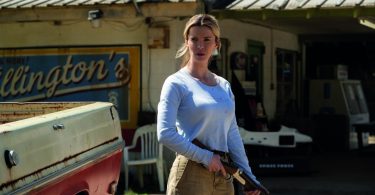I recently listened to a radio programme lauding France as the home of film festivals. In terms of nurturing home-grown talent and niche genres (contemporary silent films etc…) this may wel
I recently listened to a radio programme lauding France as the home of film festivals. In terms of nurturing home-grown talent and niche genres (contemporary silent films etc…) this may well be true, however with the BFI and and a host of other cross-city venues, our own city of London doesn’t do too badly either. The most recent of these was the Nordic film festival – the Portuguese one begins on 7th December – and although perhaps a few years ago this event would have been easily bypassed, the recent mass vogue for Scandi noir and the success of Lars Von Trier’s Melancholia dictate that this should not be the case any longer.
Along with contemporary films, the festival also highlighted several older ones that marked especially important moments in the history of Nordic film. The one that I chose to see, Festen, was one of these and, as the pre-screening notes advised, ‘remains a defining moment in Danish cinema’.
Not knowing my Danish cinema from my Swedish, I was marginally worried I would have to bluff my way through this review and/or find myself faking laughter or applause whilst remaining completely mystified. Luckily for me, Dr Claire Thomson who teaches Scandinavian Studies at UCL and specializes in film gave an introduction. I like people like Dr. Thompson as they remind me that no matter how many times people laugh in your face for studying Medieval buildings depicted in 19th century theatre or whatever else, it will ultimately be you who makes someone else’s Saturday afternoon by explaining the Dogme 95 movement. When, I wonder, did someone in finance last make anyone’s afternoon – Saturday or otherwise?
So Dr.Thompson explained the Dogme 95 movement, which was devised by Thomas Vinterberg (director of Festen) and Lars Von Trier. In short it sounded like something Roland Barthes would have liked, in that it sought to do away with the idea of the director (ironically, with Von Trier and Vinterberg both being semi-celebrities) and to really strip down the whole filmmaking and viewing experience – no overblown scenes of murder or special effects. One obvious was in which Festen does this is by using a hand-held camera throughout. This technique, which is now more commonly associated with the Blair Witch Project, takes the viewer right inside the group of actors who, when viewed from within, seem less like actors. Dr Thompson also deterred from offering a synopsis of the actual events, as this would spoil it for first-time viewers. Irritating as this may be, I am going to do similar whilst encouraging anyone who has not seen it to ceremoniously uproot from whatever they are doing right now – lectures, working, funerals, lunches – and go see it Now.
The most realistic and disturbing quality of the film is the sound. From the opening sequence involving a cavalcade of cars ascending a gravel drive towards a manor house, my first thought was ‘This sounds like a Lars Von Trier film.’ Aside from the obvious narrative comparisons to Melancholia, the slightly heightened quality of all the normal sounds – tyres on gravel, a car door clicking shut – gives this little nervy edge to all the action. As with the beginnings of a panic attack when all sounds, sights and smells become enhanced, we expect something bad to be looming. All is not quiet and still, it is undercut with an unhappy heartbeat waiting to explode.
Recently Hollywood films, which want to seem Indie have taken this technique and used it to a hyperbolic degree. For instance in both Ginger and Rosa and The Master, forks scrape along dinner plates at a louder volume than voices speak and this, instead of just drawing attention to the intensity of everyday minutiae, creates a trite version of hyper-reality which is just as ridiculous as most films set in Space. It is also a great shame as, used correctly, this technique can be incredibly effective.
In Festen, a film in which the bulk of the most violent and repellent action is set in the past and never narrated on screen, the camera technique and the sound quality combine to make subtle moments of human paranoia and anger much more unnerving. The moment when Helene creeps around the suite her sister recently died in, convinced there is a ghost lurking somewhere, is more genuinely entrancing and spine-chilling than any horror movie in which something ghastly actually does pop out from behind the shower curtain. Similarly the various scenes in which Michael pounces on someone in an attempt to beat them up, but only ever slaps and kicks them around a bit, are very uncomfortable viewing, mainly because you keep expecting him to stamp on the other person’s head and, if this were to happen, the view, without any Hollywood effects, would be truly horrific.
And what of the director, who also co-wrote the film? Forgotten, he may want to be, but aside from the Dogme 95-approved sound and filming techniques, the story itself and, in particular, the dialogue, is heartbreaking and beautiful. Throughout it is uncomfortable, crisp and minimalist, like a morning walk through the woods in winter. I’ll forget the director, but I wont forget this film for a while.








